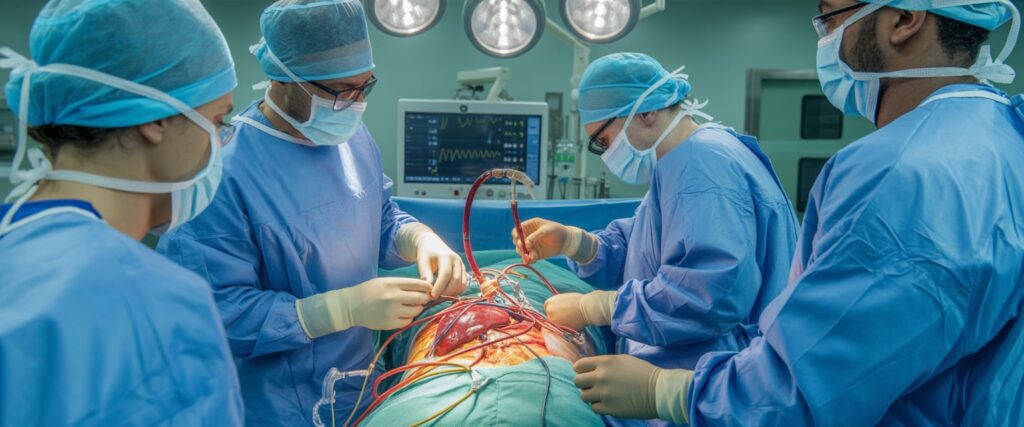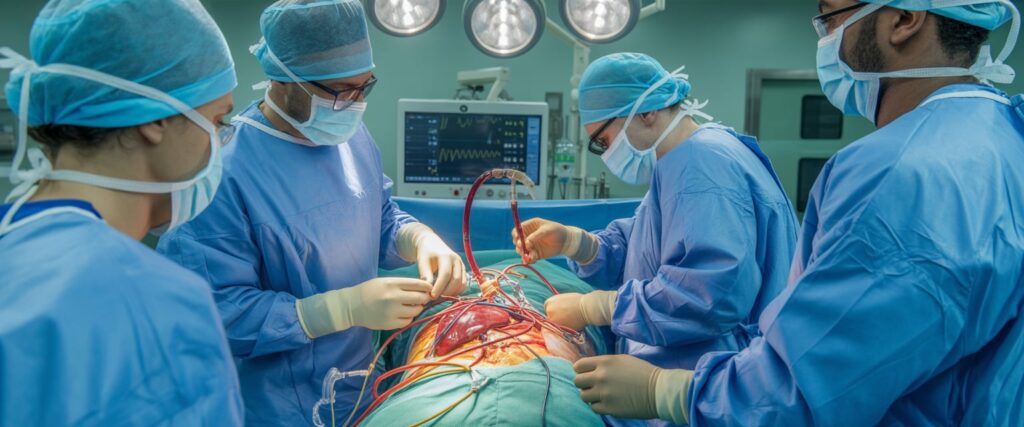Average life expectancy after a successful liver transplant is around 10–20 years or more, depending on the recipient’s age and condition. Some studies, including Apollo 24/7’s analysis, report that many long-term survivors reach near-normal lifespans when they maintain strict medical follow-up. Understanding What is life expectancy after a liver transplant? is one of the most important concerns for patients and families preparing for this life-changing surgery.
Modern medicine has transformed liver transplantation into a procedure with strong long-term outcomes, offering many recipients the chance to live full, productive lives for decades. As survival rates continue to improve due to better surgical techniques, advanced immunosuppressive medications, and personalized aftercare, the question What is life expectancy after a liver transplant? reflects both hope and careful curiosity about what the future may hold.
What is life expectancy after a liver transplant?
A liver transplant can give people with severe liver disease a second chance at life. On average, most people live more than ten years after a successful liver transplant, and many live twenty years or longer according to MedicineNet. While the surgery is complex and carries risks, modern medical care and better medications have made long-term survival more common than ever.
The operation itself is a major procedure that replaces a failing liver with a healthy one. Recovery can take time, and risks such as infection, rejection, or complications may occur. According to Medical News Today, about 86% of patients survive the first year and more than half are still living twenty years after surgery. These numbers show that while challenges exist, most recipients can expect a meaningful and lasting recovery.

Life after transplant often means forming new habits and following medical guidance closely. People must take anti-rejection drugs, avoid certain foods and activities, and protect themselves from infection. Those who maintain healthy lifestyles can return to work, enjoy daily activities, and even live for decades. The journey after transplant is demanding, but with commitment and care, a normal, fulfilling life is possible.
People who receive a liver transplant often live for many years when they follow medical advice and manage other health conditions like diabetes or cardiovascular disease. Overall survival and quality of life depend on donor match, post-surgery care, and how well the body accepts the new liver.
Average Life Expectancy Post-Transplant
On average, people who undergo liver transplantation live 10 to 20 years or longer after surgery, depending on their overall health and the cause of liver failure. According to MedicineNet, many recipients live well beyond a decade, and some continue healthy lives for two decades or more.
Younger patients and those without major co-morbidities such as diabetes or high cholesterol usually experience better long-term survival. Those who receive a living donor liver often have slightly longer graft and patient survival compared to deceased donor transplants.
While the new liver does not have a fixed lifespan, studies show that transplanted organs can remain functional for 20–30 years, with some rare cases extending beyond that range. Patients who maintain healthy habits and adhere to medication schedules tend to achieve the longest life expectancy.
Survival Rates by Timeframe
Survival rates after liver transplant reflect both patient and graft survival. National data reported by the Columbia Surgery program show that one-year patient survival averages around 87% for deceased donor recipients and over 90% for living donor recipients.
By year five, survival typically ranges between 70–75%, depending on the underlying cause of liver failure and post-transplant complications. Data from DrOracle.ai indicate that survival may remain at 71% after 10 years, showing remarkable durability over time.

Table: Typical Survival Rates After Liver Transplant
| Time After Surgery | Average Patient Survival |
|---|---|
| 1 year | 85–95% |
| 5 years | 70–75% |
| 10 years | 65–75% |
These numbers can vary based on health status, age, and adherence to medical care.
Long-Term Outcomes and Quality of Life
Most liver transplant patients can return to a fairly normal lifestyle once recovery is complete. Many work, travel, and enjoy family activities. The Ohio State Health & Discovery program reports that about 75% of patients live at least five years, and some live more than 40 years after transplantation.
Immunosuppressive therapy is necessary to prevent rejection, but it can increase the risk of infections and metabolic issues like weight gain or high cholesterol. Despite these challenges, regular follow-ups, proper diet, and exercise help recipients maintain good physical and emotional health.
For those who manage complications and keep a stable medication routine, long-term survival often matches or exceeds other major organ transplant outcomes.
Factors Influencing Survival
Several factors influence how long a person lives after a liver transplant. Age, cause of liver disease, and co-morbidities such as diabetes or cardiovascular disease are key predictors. The Model for End-Stage Liver Disease (MELD) score also plays a major role in determining pre-transplant urgency and post-surgery outcomes.
A strong immune response, effective immunosuppressive management, and early detection of rejection significantly improve survival. Conversely, chronic rejection, infection, or recurrence of the original liver disease (like hepatitis or fatty liver disease) can shorten life expectancy.

Long-term success depends heavily on lifestyle decisions. Avoiding alcohol, stopping smoking, managing cholesterol, and maintaining a healthy weight all contribute to better function of the transplanted liver. Regular monitoring and medical adherence remain essential for sustaining liver health over time.
Risks, Complications, and Causes of Graft Loss
Liver transplantation can restore life in advanced liver failure, but it carries medical and surgical challenges. Patients face risks from the operation itself, ongoing complications from immune suppression, and potential graft loss if rejection or other damage occurs over time.
Risks of Liver Transplant Surgery
A liver transplant is a major operation that lasts several hours and requires both surgical precision and post‑surgical monitoring. Immediate surgical risks include bleeding, blood clots, and bile duct leaks. Vascular issues such as hepatic artery thrombosis may also threaten graft survival.
Infection is a frequent early risk because immunosuppressive drugs lower the body’s natural defenses. Patients with hepatitis B or hepatocellular carcinoma often require special monitoring after transplant to prevent recurrence. Those with existing cardiovascular disease or diabetes face higher perioperative complications due to stress on the heart and kidneys.

Careful selection of candidates and postoperative management reduce these risks, but close follow‑up is necessary within the first few weeks. Most patients stay in the hospital for about two to three weeks as doctors stabilize liver function, adjust medication levels, and monitor for surgical complications.
Common Complications After Transplant
Common complications can occur months or years after surgery. Long‑term use of immunosuppressive medications prevents rejection but increases the risk of metabolic and vascular problems. Over half of long‑term deaths relate to these drugs, which contribute to renal failure, infection, malignancy, and cardiovascular disease according to the American Journal of Transplantation.
Patients often develop high blood pressure, diabetes, or high cholesterol linked to medications such as tacrolimus or cyclosporine. Regular exercise and weight control help lower these risks. The risk of skin cancer and other malignancies also increases because immune suppression weakens normal cancer surveillance.
Physical activity and proper nutrition improve quality of life and reduce metabolic complications, as noted by PMC research on post‑liver transplant care. Continuous medical monitoring and lifestyle changes remain key to long‑term success.
Causes of Graft Failure and Rejection
Graft failure can occur from immune rejection, infection, vascular problems, or recurrence of underlying disease. The immune system may attack the new liver if immunosuppression levels drop too low. Acute rejection is usually treatable, but chronic rejection causes progressive loss of graft function leading to liver failure.
Hepatic artery thrombosis is a major cause of early graft loss, while recurrent liver disease such as hepatitis B or liver cancer may damage the graft later. According to Liv Hospital’s overview, prompt recognition of symptoms—such as jaundice or rising liver enzymes—supports faster intervention.

In rare cases, the new liver cannot function adequately, requiring urgent re‑transplantation. Early detection with imaging, biopsies, and labs helps maintain graft survival for decades.
Leading Causes of Death After Transplant
Deaths that occur years after a liver transplant often result from conditions unrelated to the original liver disease. Long‑term immunosuppressive therapy greatly contributes to mortality by raising the risk of cancer, renal failure, and cardiovascular disease, as shown in The Lancet’s analysis of long‑term mortality.
Malignancies such as skin cancer or lymphoma occur more frequently in these patients than in the general population. Cardiovascular complications, including heart attack and stroke, are also leading causes of death. Infections remain a persistent hazard because immune defenses are suppressed.

Even so, many individuals live normal, active lives for decades following transplant. Modern care strategies focus on balancing immune control with lower toxicity, reducing chronic kidney injury and other long‑term complications that threaten survival.
Recovery, Hospital Stay, and Transplant Process
After liver transplantation, patients move through several stages that test both their health and patience. The hospital stay often lasts weeks, the surgery itself is long and complex, and recovery requires commitment to medication and lifestyle changes. Getting on the waiting list depends on strict medical criteria such as MELD scores and overall organ function.
Length of Hospital Stay
Most liver transplant recipients stay in the hospital between one and three weeks. In some cases, if the person was very sick before surgery or complications arise, the stay can extend longer. Immediately after surgery, patients usually spend several days in intensive care, where doctors monitor liver function, blood flow, and signs of rejection.
Once stable, patients move to a regular hospital room. Nurses and doctors teach them how to manage medications, especially immunosuppressants that prevent the immune system from attacking the new liver. According to Healthline, recovery continues at home for several months, and a caregiver is often needed for daily support. Frequent follow-up visits and blood tests check liver enzyme levels and help adjust medication doses.
Transplant Surgery Overview
Liver transplant surgery is a major operation that can last up to 12 hours, depending on the complexity of the case. During the operation, surgeons remove the damaged liver—often affected by cirrhosis or liver failure—and replace it with a healthy donor liver. As detailed by Cleveland Clinic, surgeons attach the new organ’s blood vessels and bile ducts before closing the incision.

Patients receive general anesthesia, so they remain asleep throughout. Multiple tubes and lines help drain fluids, provide medication, and support breathing. If the donor is deceased, the full liver is transplanted. For living donor surgeries, only a lobe is used, which later regenerates in both the donor and recipient.
Pain and Recovery Experience
Pain levels vary after a transplant, but most patients receive pain medicine to stay comfortable. The incision across the abdomen can feel sore for several weeks. Gradual movement helps healing but must match the doctor’s guidance.
During the early recovery period, patients are taught wound care, signs of infection, and how to track blood pressure and temperature. They usually start eating soft foods once the digestive system functions again. Physical therapy helps improve strength and mobility.
According to Healthgrades, long-term recovery depends on medication compliance and medical follow-up. Fatigue is common, but most people regain daily independence within a few months. Emotional adjustment is part of recovery too, especially for those who faced long-term illness or time on the waiting list.
Getting on the Waiting List
Before someone can receive a transplant, they must qualify for the national liver transplant waiting list. Hospitals assess medical history, test results, and the ability to tolerate surgery. Patients with acute or chronic liver failure, such as those caused by viral hepatitis or cirrhosis, are often candidates for transplantation.
The Model for End-Stage Liver Disease (MELD) score ranks adults based on lab values that indicate disease severity. A higher MELD score means greater urgency. Children are ranked using the PELD system. As described by Cleveland Clinic, only those in adequate overall health and without active substance abuse are added to the national list organized by the United Network for Organ Sharing (UNOS).

Candidates remain on the list until a suitable match is found, with blood type, body size, and medical condition all influencing priority.
Living After Liver Transplant: Restrictions, Lifestyle, and Alternatives
After a liver transplant, patients must manage their health carefully to maintain proper liver function and avoid complications. Key areas include diet, medication safety, infection control, and understanding long-term alternatives if another transplant becomes necessary.
Physical and Dietary Restrictions
Daily routines after surgery focus on protecting the new organ and preventing infection. Patients have regular blood tests to check for signs of organ rejection and must keep all medical appointments. Doctors often advise avoiding strenuous lifting or contact sports until the abdomen has fully healed.
A balanced diet helps control co-morbidities like high blood pressure and diabetes. Transplant teams often refer patients to a nutritionist to build a meal plan that maintains healthy weight and stable blood sugar. Foods that support recovery include lean proteins, whole grains, fruits, and vegetables.

Certain foods and drinks can interfere with immunosuppressants. For example, avoid grapefruit and grapefruit juice, as these affect how medicines work according to the NIDDK’s post-transplant guidance. Other unsafe choices include raw seafood, undercooked eggs, and unpasteurized dairy. Patients should drink only treated or bottled water to reduce infection risk.
Alcohol, Medications, and Toxic Risks
Patients must never resume alcohol use after a transplant, especially if liver disease was linked to alcohol consumption. Even small amounts can damage the new liver. Alcohol also interacts dangerously with immunosuppressants and other prescription drugs.
Many over-the-counter pain relievers, such as certain anti-inflammatory medicines, may stress the liver. Acetaminophen must be taken only under medical supervision. Physicians review all new medications before use to prevent toxic reactions.
Immunosuppressants are lifelong drugs that prevent the body from rejecting the liver, but they weaken the immune system. Common side effects include high cholesterol, kidney changes, and diabetes. Details about drug safety and monitoring are outlined in NIDDK’s transplant information.
Pets and Daily Life After Transplant
Daily activities gradually return to normal, but patients should avoid infection sources. For example, the NHS Blood and Transplant service advises wearing gloves when gardening and avoiding pet waste or animal scratches. Pets such as reptiles, birds, or rodents pose higher infection risks. Most patients can safely live with dogs or cats if they maintain good hygiene and keep animals vaccinated.
Hygiene routines include frequent handwashing, using insect repellent outdoors, and wearing shoes to prevent soil contact. Many people return to work within a few months depending on their recovery and job demands.
Alternatives to Liver Transplant
When a liver transplant is not possible or must be delayed, several alternatives can support liver function. Medication and lifestyle changes may help slow disease progression for certain conditions. For example, antiviral drugs control hepatitis B and C, while weight loss and blood sugar management improve fatty liver disease.

Other options include artificial liver support systems, partial resection surgery, or living donor transplantation, where part of a healthy liver from another person is used. According to Columbia Surgery’s liver transplant FAQ, patients with early liver disease may live decades without a transplant if their remaining liver tissue functions well. These strategies offer short- or long-term management, depending on the cause and severity of the liver damage.
Conclusion
For anyone facing severe liver disease, learning What is life expectancy after a liver transplant? helps set realistic expectations and highlights the remarkable progress of modern transplant care. With consistent medical follow-up, healthy lifestyle decisions, and proper medication management, many individuals exceed average survival estimates and enjoy long, meaningful lives. Ultimately, the answer to What is life expectancy after a liver transplant? shows that while challenges exist, the potential for long-term recovery and a return to normalcy has never been greater.
Frequently Asked Questions
Liver transplants can extend life for people with severe liver disease, but the surgery carries serious risks and lifelong medical needs. Recovery, lifestyle limits, and ongoing medication use affect long-term health and quality of life.
What are the risks of liver transplant?
Complications can include bleeding, infection, and organ rejection. Blood clots and bile duct problems sometimes occur. Long-term use of anti-rejection drugs can lead to kidney damage, high blood pressure, or diabetes.
What is the survival rate of a liver transplant?
One-year survival averages about 85–90%, and many recipients live decades after surgery. According to Columbia Surgery, patient survival rates reach 87% with deceased donors and 92% with living donors. Five-year survival ranges around 70%.
What can go wrong with a liver transplant?
Rejection of the transplanted liver can develop even with careful treatment. Chronic rejection or bile duct damage can cause liver failure. Infections are common because immune-suppressing drugs lower the body’s ability to fight germs.
Can you live normal life after a liver transplant?
Most recipients return to work and daily activities within months. Many live for decades with normal life patterns, exercise, and family routines. Success depends on following medication and care plans.
What is the leading cause of death after a liver transplant?
The most common causes include infection, recurrent liver disease such as hepatitis, and complications from long-term immunosuppressant use. Heart disease and cancer also pose risks over time.
How long is a hospital stay after a liver transplant?
Patients usually stay in the hospital 7–10 days, according to Columbia Surgery. Full recovery at home may take around three months before returning to work.
What are the alternatives to a liver transplant?
Alternatives depend on the liver condition. Some patients may receive partial liver removal, medication, or procedures to manage symptoms. In limited cases, artificial liver devices can provide short-term support.
What can you not have after a liver transplant?
Alcohol and certain drugs that harm the liver must be avoided. Foods that raise infection risks, such as unpasteurized dairy and undercooked meat, are not recommended. Grapefruit products may interfere with immunosuppressants.
What are the restrictions after a liver transplant?
Patients must take lifelong medications to prevent rejection. Smoking, excessive sun exposure, and contact with infectious agents should be avoided. Regular doctor visits and blood tests are required.
What food to avoid after liver transplant?
Avoid raw seafood, unpasteurized milk, and soft cheeses made from unpasteurized milk. Limit high-sodium and high-fat foods to prevent complications from medications.
Can you have pets after a liver transplant?
Yes, but with precautions. Pets should be healthy and up to date on vaccines. Avoid cleaning litter boxes or cages directly to reduce infection risk.
Can a liver transplant patient eat pizza?
Yes, if eaten in moderation. Homemade or freshly prepared pizza made with pasteurized cheese and properly cooked toppings is safer than raw or unheated leftovers.
What is the 6 month rule for liver transplant patients?
Many centers require proof of at least six months of sobriety before listing patients with alcohol-related liver failure for a transplant. This confirms commitment to recovery and lowers risk of relapse.
What drug is most toxic to the liver?
Drugs containing acetaminophen (Tylenol) are the most common cause of drug-induced liver injury when used in excess. Certain prescription medicines and alcohol also increase liver toxicity risk.
How successful is a liver transplant?
Success depends on patient health and post-surgery care. Modern transplants have high survival rates, and many recipients can live productive lives for decades, as shown in MedicineNet’s overview of life expectancy.
Can a person live normal life after a liver transplant?
Many liver transplant recipients enjoy a near-normal life. They may work, travel, and start families while taking regular medications and attending follow-up checkups.
Is a liver transplant a big operation?
Yes. The surgery takes several hours and involves removing the diseased liver and connecting the new one to major blood vessels and bile ducts. Recovery requires intensive care and close monitoring.
What are the odds of getting a liver transplant?
Availability depends on blood type, severity of illness, and organ supply. Those highest on the transplant list due to advanced liver failure have better chances of receiving one soon.
How painful is a liver transplant?
Pain is expected but managed with medication. Numbness around the surgical area is common because abdominal nerves are cut during surgery, then slowly heal over months.
Can you ever drink alcohol again after a liver transplant?
No. Alcohol can harm the new liver and interfere with medications. Columbia Surgery warns that even small amounts, including “non-alcoholic” beer, can pose risks.
How is life after a liver transplant?
With proper medication and lifestyle management, life is often active and fulfilling. Most patients regain good energy levels and independence within a few months.
What happens if you drink alcohol after a liver transplant?
Alcohol can cause liver inflammation, medication interference, and graft failure. Continuous drinking may lead to loss of the transplanted liver and even death.
How long is a hospital stay for a liver transplant?
Typical hospitalization lasts one to two weeks depending on recovery speed and absence of complications. Some need extended stays for infection or rejection management.
Can you live 40 years after a liver transplant?
Yes. Some recipients have lived 30–40 years after surgery, as noted by Ohio State Health & Discovery. Long-term survival depends on health, adherence to care, and absence of serious complications.
How does your personality change after liver transplant?
Most people do not experience significant personality changes. However, side effects of medications or emotional stress can cause mood shifts that usually improve over time.
